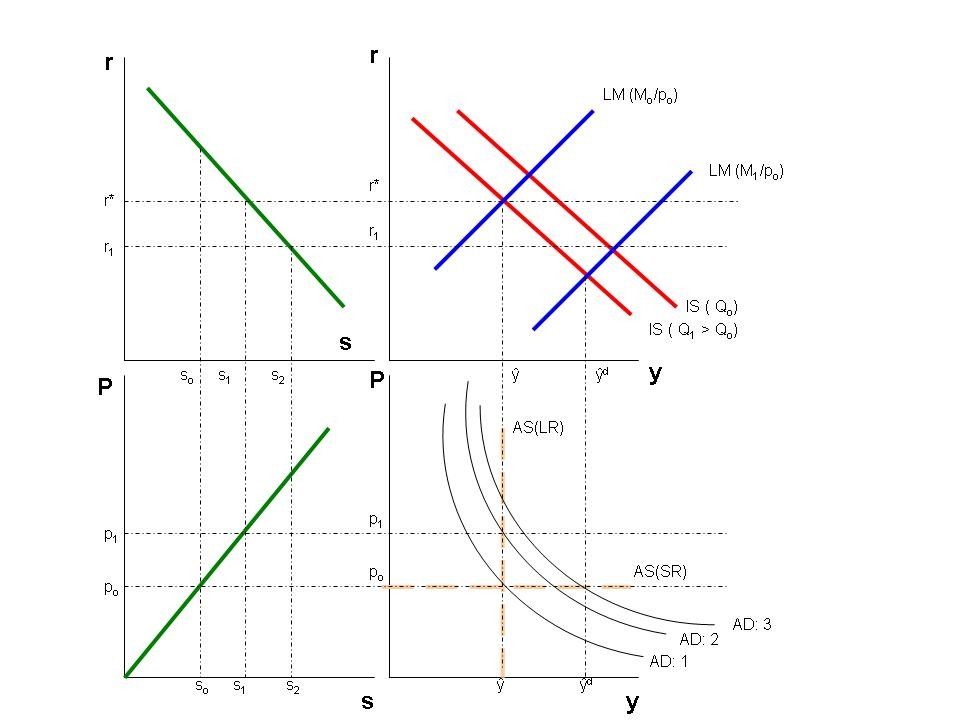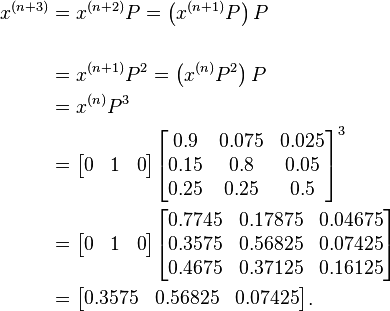Equilibrium (Stock market) Definition Online Encyclopedia
Post on: 5 Апрель, 2015 No Comment

Equilibrium price
Equilibrium price is the price at which the quantity in demand is equal to the quantity of that good supplied. (ex. the quantity of a certain t-shirt is equal to the amount of people who wish to possess the t-shirt) It is generally a sign that a nation’s economy is healthy.
In non-linear dynamic series. an Attractor defines the Equilibrium level of the system. See: Point Attractor, Limit Cycle. and Strange Attractor.
Related Links.
Equilibrium Market — A price region that represents a balance between demand and supply.
General equilibrium and disequilibrium
Mathematical finance
Finance theories
This is an equilibrium indicator that is used to show support and resistance levels, trend directions and to specify buy and sell signal s. It is designed to provide the trader with as much information as possible without the need of any other indicator .
IDR (Indonesian Rupiah).
With unemployment equilibrium I refer to the Non-accelerating inflation rate of unemployment (NAIRU), and refers to a level of unemployment which is simplified; said to expect to keep inflation stable.
The equilibrium price for futures contract s. Also called the theoretical futures price, which equals the spot price continuously compounded at the cost of carry rate for some time interval.
What Is Capital Market Equilibrium.
What Are the Different Ways to Become Eligible for Unemployment?
What is Land Banking?
What Is a Deposit Receipt?
What Is a Categorical Grant?
What Is Speculative Stock.
What is Deleveraging?
Face value Related: Par value Fair price The equilibrium price for futures con-tracts. Also called the theoretical futures price. Feasible portfolio A portfolio that an investor can construct given the asset s available. Feasible set of portfolio sThe collection of all feasible portfolio s.
Theoretical futures price Also called the fair price, the equilibrium futures price.
Trading Range (TR): a condition characterized by temporary price trends. which are offset by ensuing moves in the opposite direction, and by a persisting equilibrium in the supply -demand relationship. Behavior of: Generally in the first part of the trading range the price swings are rather wide.
Ichimoku translates to a glance, kinko means equilibrium , while hyo is Japanese for chart . Putting that all together, the phrase ichimoku kinko hyo stands for a glance at a chart in equilibrium ..
At this point supply and demand are in balance or equilibrium . At any price below P, the quantity demand ed is greater than the quantity supplied. In this situation consumers would be anxious to acquire product the producer is unwilling to supply resulting in a product short age.
Usually buyer s know enough to step out of the way until some sort of bottom equilibrium is final ly reached. This provides the opportunities to produce huge profit s for the patient investor. Stock prices can drop 20%, 40%, 60 %, or greater in a matter of minutes.
Both ratio nal and irrational factors determine supply and demand .
Although there are fluctuations, market price s trend up or down for a variable. but usually, extended time.
Also, we can talk about the existence of supply and demand curve s above and below the equilibrium price that exists at a given time (there are trader s who would be able to buy at a price above the equilibrium price. And if there is someone who is willing to sell at a lower price).
Most absolute pricing model s are what are known as equilibrium pricing model s. They calculate at what prices a market will reach equilibrium -where supply and demand balance and the market clears.
This line can be considered as a description of an equilibrium price. In this case any fluctuations upward or downward from the line can show excessively zealous seller s or buyer s. There is also a number of possibilities of using the regression line. They are: Price forecasting.
Momentum is represented on a chart as a line that is continually fluctuating above and below a horizontal equilibrium level that represents the halfway point between the extreme readings.
What is being attempted under Abenomics is nothing less than a leap from a low -growth deflation ary equilibrium to a new equilibrium characterized by positive inflation and higher sustained growth.
During this phase both support and demand are roughly in equilibrium. Buyer s may still like the stock but they are not willing to chase the price significantly higher.
One participant said that the real equilibrium rate had shifted higher, while two member s noted that standard policy rules suggested that the fed funds rate should be lifted off its lower bound before the middle of this year.
Individual dojis indicate equilibrium on the market as bulls and bears are relatively equally matched but a succession of trend ing dojis indicate a trend.
Graphically, momentum is represented as a horizontal line which fluctuates above and below an equilibrium line.Momentum provides an analysis of changes in prices (as opposed to changes in price levels). Changes in the rate of ascent or descent are plotted.
Capital Asset Pricing Model (CAPM) — an equilibrium based asset pricing model developed independently by Sharpe, Lintner and Mossin.
In a totally new way of looking at financial economics, Nonlinear Pricing abandons the traditional assumptions of equilibrium in economics and randomness in a time-series.
One kind of frictional unemployment is called wait unemployment: it refers to the effects of the existence of some sector s where employed workers are paid more than the market -clearing equilibrium wage.
Abnormal Profile — the fundamental requirement for an ideal profile is a normal, equilibrium (balance d) distribution. A profile (i.e. an auction market ) that is in equilibrium will produce a single wide distribution with a conspicuous POC at its head.

Eventually, as selling and buying pressures come into balance. the stock reaches a state of equilibrium. We will call this Phase CTopping out. The stock has lost its upward momentum and has begun to move sideways in a trading range.
If there are more potential buyer s, the buying pressure will force the price up until equilibrium is final ly established. The buyer s, at this time, have control. If there are more seller s than buyer s, then the price will be forced down, and the seller s have control.
Ichimoku Kinko Hyo translates into ‘one look equilibrium chart ‘. With one look, chartist s can identify the trend and look for potential signal s within that trend. The indicator was developed by Goichi Hosoda, a journalist, and published in his 1969 book.
The gradual release of this pressure would’ve deflated overheated market s (that were severely understating the short term credit /gain, and long term loss /debt ) where an equilibrium of loss and gain could have been attained (and thus contained.).
If you think of this trend line as describing an equilibrium price, then any moves above or below the trend line indicate overzealous buyer s or seller s.
The economy will always fluctuate above and below it’s equilibrium state, causing the fed to raise and lower interest rates. which will cause consumers to increase or decrease spending and saving. This financial cycle sets the stage for trader s to bet on the rise and fall of the price of money.
Ichimoku Kinko Hyo is a Japanese phrase that translates to equilibrium chart at a glance. It is used to define market trends. levels of support and resistance. and to generate signal s of purchase and sale. More generally. it is used to illustrate where prices are likely to go and when to trade.
The trend line is displayed in the exact middle of the prices. If you think of this trend line as the equilibrium price, any move above or below the trend line indicates overzealous buyer s or seller s. A Linear Regression trend line shows where equilibrium exists.
A moderate strategy for Ethel Equilibrium
5 of 7
As prices near the support (upper line), the buyer s (bulls ) step in and drive the prices higher.
Alternating thick and thin lines shows that the market is in a state of equilibrium (i.e. supply equals demand ).
The most basic trading technique for kagi charts is to buy when the kagi line changes from thin to thick and to sell when the kagi line changes from thick to thin.
Values around the +50 level indicate that trend and noise are in equilibrium. while values close to 100 can signify strong trend ing conditions, and values close to 0 suggest that the trend is weak.
TRIN stands for TRader s’ INdex. A ratio of 1 means that the market is in equilibrium ; than 1 means that more volume moves in stocks and declining below 1 means that more volume is a step in the promotion of stocks. This indicator was developed by Richard Arms. (full article).
Look at this line as the ‘equilibrium ‘ price. A best fit means that a line is constructed where there is the least amount of space between the price points and the actual Linear Regression Line. Any move above or below this line indicates more zealous buyer s (above) or seller s (below).
equilibrium price (investment & finance)
equipment (investment & finance)
The space inside the channel is where price equilibrium exists. The price will tend to move inside the two outside lines. When it break s out of the channel. it’s an indication that the trend has changed.
A Linear Regression line is a ‘best fit’ line modeling a scatter plot of data. One can think of it as the equilibrium line of a set of data points. As used in technical analysis. it simply offer s an indication as to the general direction of the underlying issue over a designated period of time.
This is because a big profit zone means price is far from equilibrium and out at price levels where the demand and supply imbalances are largest. The distance between the two black lines is the distance from our entry point to our protective stop loss price.














